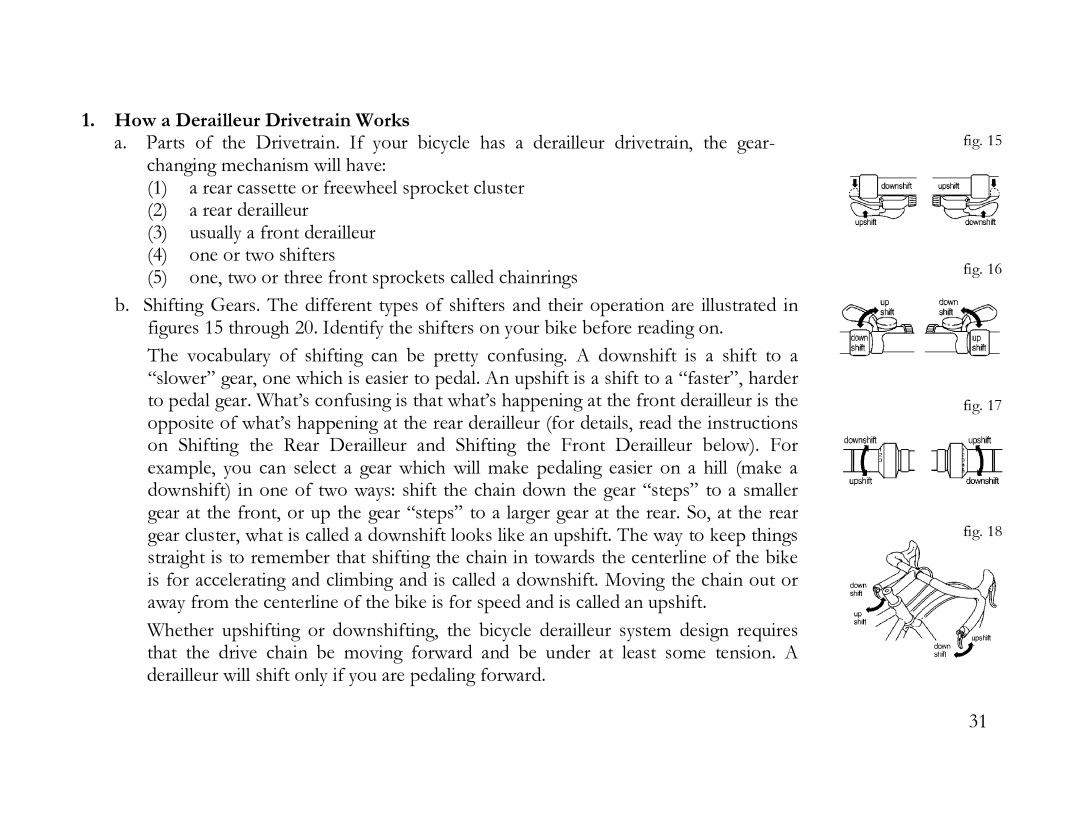
1.How a Derailleur Drivetrain Works
a.Parts of the Drivetrain. If your bicycle has a derailleur drivetrain, the gear- changing mechanism will have:
(1)a rear cassette or freewheel sprocket cluster
(2)a rear derailleur
(3)usually a front derailleur
(4)one or two shifters
(5)one, two or three front sprockets called chainrings
b.Shifting Gears. The different types of shifters and their operation are illustrated in figures 15 through 20. Identify the shifters on your bike before reading on.
The vocabulary of shifting can be pretty confusing. A downshift is a shift to a “slower” gear, one which is easier to pedal. An upshift is a shift to a “faster”, harder to pedal gear. What’s confusing is that what’s happening at the front derailleur is the opposite of what’s happening at the rear derailleur (for details, read the instructions on Shifting the Rear Derailleur and Shifting the Front Derailleur below). For example, you can select a gear which will make pedaling easier on a hill (make a downshift) in one of two ways: shift the chain down the gear “steps” to a smaller gear at the front, or up the gear “steps” to a larger gear at the rear. So, at the rear gear cluster, what is called a downshift looks like an upshift. The way to keep things straight is to remember that shifting the chain in towards the centerline of the bike is for accelerating and climbing and is called a downshift. Moving the chain out or away from the centerline of the bike is for speed and is called an upshift.
Whether upshifting or downshifting, the bicycle derailleur system design requires that the drive chain be moving forward and be under at least some tension. A derailleur will shift only if you are pedaling forward.
fig. 15
fig. 16
fig. 17
fig. 18
31
